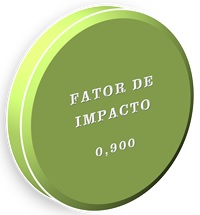GRAIN YIELD AND PATH ANALYSIS IN THE EVALUATION OF COWPEA LANDRACES
DOI:
https://doi.org/10.1590/1983-21252019v32n202rcKeywords:
Vigna unguiculata. Traditional varieties. Yield components. Brazilian Northeast crops. Rio Grande do Norte State.Abstract
Cowpea is a staple food in the Northeast of Brazil, thus, genetic improvement of this species is important. Samples of cowpea landraces were collected in the State of Rio Grande do Norte, Brazil, and the most promising ones were evaluated in the present study. The objective was to identify the most productive varieties and the characteristics that have greater direct effect on grain yield, for breeding purposes. Twelve landraces were evaluated using a randomized block design with five replications, in two experiments—one in the dry season, and other in the rainy season. However, water irrigation was used in both experiments, due to the almost total absence of rainfall in the rainy season. The Baraúna, and Carnaubais cowpea varieties were the most productive in both experiments. Campo Grande was the best variety found in the experiment carried out in the dry season. José da Penha, Lagoa de Pedra, Umarizal, and Upanema were the best varieties in the experiment carried out in the rainy season. The number of pods per plant was the characteristic that had greater direct effect on grain yield.
Downloads
Downloads
Published
Issue
Section
License
Os Autores que publicam na Revista Caatinga concordam com os seguintes termos:
a) Os Autores mantêm os direitos autorais e concedem à revista o direito de primeira publicação, com o trabalho simultaneamente licenciado sob a Licença Creative Commons do tipo atribuição CC-BY, para todo o conteúdo do periódico, exceto onde estiver identificado, que permite o compartilhamento do trabalho com reconhecimento da autoria e publicação inicial nesta revista, sem fins comerciais.
b) Os Autores têm autorização para distribuição não-exclusiva da versão do trabalho publicada nesta revista (ex.: publicar em repositório institucional ou como capítulo de livro), com reconhecimento de autoria e publicação inicial nesta revista.
c) Os Autores têm permissão e são estimulados a publicar e distribuir seu trabalho online (ex.: em repositórios institucionais ou na sua página pessoal) a qualquer ponto antes ou durante o processo editorial, já que isso pode gerar alterações produtivas, bem como aumentar o impacto e a citação do trabalho publicado (Veja O Efeito do Acesso Livre).







